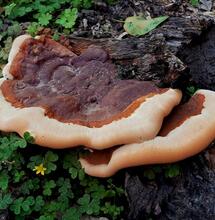How to Make Cannabis Coconut Oil?

Never heard of it? Not trying to offend you, but you are probably a Boomer. Well, if you are part of Millennial or Gen Z, cannabis coconut oil probably is something that you are very familiar with. Even if you haven't tried it yet, you must have at least that one weird pal who's after this stuff.
We highly appreciate our moms and grannies who are unapologetically winners in the recipes category. Still, when it comes to cannabis coconut oil, it is really the “thing” of this generation. The widespread use goes from rubbing it into sore muscles, mixing it into a pain-relieving CBD salve, and even exotic massages. And cooking with cannabis coconut oil is another chapter, whether it is experimenting with new vegan recipes or simply starting the day with a teaspoon of it in your coffee or smoothie. Keep scrolling to learn how to make cannabis coconut oil – you won’t regret it!
What's All the Fuss around Cannabis Coconut Oil?
It's likely because of its accessibility and very high saturated fat content that makes it extracting up to 82% of cannabinoids. Name a diet, and it’s there: keto, vegan, paleo. Maybe the French would disagree, but coconut oil is considered the ideal replacement for butter, especially in a vegetarian, vegan, plant-based, and allergen-friendly dairy-free world. It sounds like the future world to me!
How Much is Enough?
As the familiar adage on edible cannabis goes, do not overdo it – certainly not when using it for your culinary exercises. It is different for everybody, and it takes anywhere between 30 minutes and even over an hour to hit. If you are a beginner and don’t know exactly how strong it could be, start with a ½ teaspoon of infused coconut oil per portion, which is about 10 mg for the portion side. You probably won’t gain weight from this serving, but you’ll gain a different type of superpower.
Cannabis coconut oil is one of the easier cannabis-containing recipes to make. Once ready, you can use it as a beauty product or as a special cooking ingredient.
What Type of Coconut Oil Should You Choose?
You can choose between several different types of coconut oil to prepare your new cannabis concoction. Choose what seems most suitable for you.
First on the list is virgin or unrefined coconut oil. It's the most organic one. It will enchant you with the strong coconut smell as it is made of fresh coconuts and then cold-pressed, and contains 63% MCTs (medium-chain triglycerides) and 50% lauric acid (with extraordinary medical qualities). On the other hand, refined coconut oil is made from dried coconuts with additional processing. In terms of content, it has the same values as the unrefined, only the smell is not that intense, which makes it more usable in basic recipes without the prevalent coco taste.
The third type is MCT, which is, in essence, a saturated fat extracted from coconuts. The distinction from the previous two types is that the absorption and digestion in the body are significantly faster. The taste is very neutral, and the process for infusing MCT cannabis oil is the same as refined or unrefined coconut oil. Once again, do not overdo it with the MCT oil, particularly not with this type, unless you want some digestive tribulation.
To Decarboxylate or Not?
It depends on the effects that you want to achieve. One recommendation is to decarb the flower for extra flavor, but if you simply opt out doing this, just cook it a bit longer, approximately eight hours. On a side note, decarboxylation is a very useful process to master, so it's a pity to avoid it. Once you hone your skill on it, you can use it to prepare anything you like with weed, including regular oils, concentrates, and juice for vaping.
The temperature is key with decarboxylation. You should control it, so it's not very high, to avoid damaging certain plant compounds that are actually beneficial. For instance, high temperatures, like keeping above 300°F (148°C), can bleach out the terpenes. The freshness of the plant material you use is also a factor. Both coconut oil and strains should be high quality. If the cannabis flower is fresh and raw, CBDA or THCA will convert more firmly. You may choose between CBD or THC prevailing strains, depending on the potency you want to bring off. Every strain has a slightly varying decarboxylate temperature and a distinctive scale of cannabinoids and terpenes. Always have in mind that lab-tested, organically grown trim or flower is the best choice.
Equipment Does Matter!
Your old student crockpot, perhaps a slow cooker, or any kind of instant pot will do the job, but if you have to choose, let that be good quality equipment with a digital thermometer that can help you throughout the cooking process.
Weed is all you need to infuse in your coconut oil. The major warning, like in other kitchen efforts, try not to churn your chunks. If need be, mix them when they're in the oven every 10 minutes.
Ready? Let's infuse!
This is one of the easiest methods: ten minutes to prepare the ingredients and about two hours of time to spoil at home and wait for the oven to do the delight.
Ingredients you’ll need:
- 7g of cannabis flower
- 100g of coconut oil
The kitchen gadgets:
- A scale (a quarter-ounce bag of weed, if you don’t have a scale)
- Scissors or an herb/cannabis grinder
- A 9x9 baking dish- if you have the glass one, use that one (choose bigger for the larger amount)
- Aluminum foil
- A medium stovetop pan
- A wooden spoon (for best results)
- Cheesecloth (clean)
- A glass jar to store
The procedure:
- Measure 7 gr of weeds, using the scale or just the bag, if you trust your dealer.
- Get ready the oven and preheat it to 215°F (100°C).
- Roughly grate the weed using the grinder or the scissors, covering the baking dish, and seal firmly with the aluminum foil.
- To activate the cannabis, it takes half an hour at 215°F (100°C), and this is the famous decarboxylation that makes the weed go wild.
- When you take it out from the oven, leave the dish sealed with foil in order to keep the cannabinoid-rich vapor longer. That will keep the flavor stronger.
- While waiting, melt the coconut oil in the pan and pour the substance over the cannabis after 15 minutes. Gently mix with the wooden spoon so it can be distributed evenly.
- Next, cover it with foil and return in the oven for another 90 minutes at 215°F. When done, let it cool for 20 minutes.
Pouring the coconut oil into the jar should be done very carefully with the assistance of a cheesecloth. Remember to squeeze enough and to remove all the parts of the strain.
What can go wrong? Overburn! If the oil begins to smoke, it’s a red flag: put away from the heat instantly and let it cool before putting again and of course, start with the lowest setting. If it’s too smelly, we don’t recommend adding it to your food, but it might pass for a nice body massage and as a muscle relaxant.
That was it! If you have followed the procedure, it’s hard to go wrong. It is a very basic process, and you should have fun while doing it. Surprise your friends by putting cannabis coconut oil when you cook for them. And first of all surprise yourself. It's healthy, tasty, greasy, and high!
Also read on Soft Secrets:
- How to Make Cannabis Cooking Oil at Home?
















